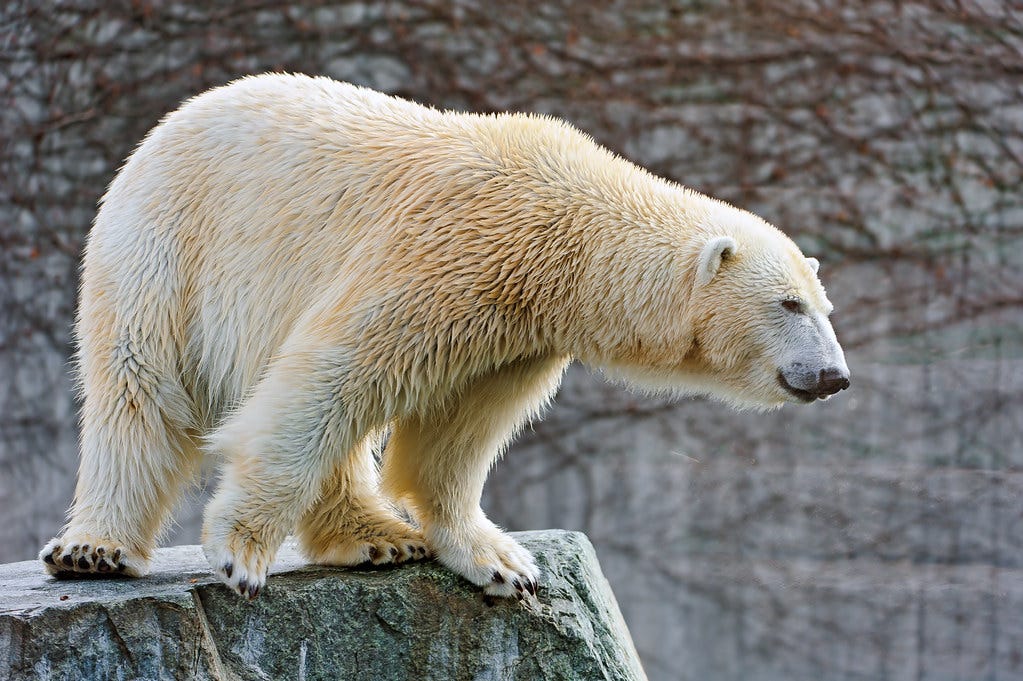Polar Bears: The Murky Population Question
Is the Polar Bear population really declining? It's not an easy question to answer, Priyamwada Singh writes for Team AKP.
The Polar Bear, also called Ursus Maritimus (its taxonomic name, meaning “sea bear”), is the largest living bear species.
They are primarily found in the arctic and “rely heavily on sea ice for travelling, hunting, resting, mating and, in some areas, maternal dens” (Source: WWF). Here is a map detailing the “Trends in Polar Bear Subpopulation”. The loss of this ice, current and predicted (Source: NASA), paints a grim picture of survival for the bear. Inhabiting this ground zero of climate change effects has made them a mascot for global-warming policy. Consequently, their population estimation has become an embattled area between the conservationists/climate change believers and climate change deniers.
The main difficulty in this debate arises from the fact that “Studying polar bears is expensive and logistically difficult, and subpopulations differ in how much information is available to understand their statuses and trends. There is high uncertainty about the discreteness and status of several subpopulations, particularly in the Russian Arctic” (Source: IUCN-PBSG). Without reliable data that can be used to compare populations over time, it is hard to make incontestable statements about the present trends.
The current estimate of global population ranges from 22,000-31,000 as per the International Union for Conservation of Nature (IUCN). This estimate, however, was challenged by Dr Susan Crockford, a zoologist, who in 2019, claimed the numbers to be closer to 39,000.
The current data regarding trends since the 1950s, is highly contested. Many cite the quintupling of population from 5000 in the 1950s and tripling or quadrupling from the 1970s to date. This data’s validity is in question, with assertions made that these estimates were simply “guesses”, lacking “scientific credibility”.
The decline in numbers of polar bears in estimates produced by the Polar Bear Specialist Group (PBSG) of the IUCN from 21,470-28,370 in 1993 to 20,000-25,000 in 2005 and 2009 is not necessarily a decline in the population itself, but is explained as exclusion of sources considered less reliable. The approach employed by PBSG was challenged by the aforementioned Dr Crockford, who seems to be a highly cited individual by sceptics of the Polar Bear’s apparent vulnerability to extinction. She graphed the population estimates (from 1981-2013), “…not just the actual estimates from PBSG status tables … but those totals plus the so-called “inaccurate” estimates that the PBSG have dropped from their accounts in recent (2005-2013) assessments….”
An assessment released by the PBSG in 2019 reported that of the 19 subpopulations of the species, a decline was seen in four, with five populations being stable, two experiencing an upward trend and eight still being data-deficient. There seems to have been an increase in some polar bear subpopulations since the 1970s due to regulation of commercial hunting.
None of the numbers and estimates mentioned so far includes the recently discovered group (study published on June 16, 2022) of polar bears in Southeast Greenland, which is yet to be recognized as the 20th distinct subpopulation of the species, by the IUCN.
The predictions made about the future of Polar Bear populations, based on climate change models are not encouraging. Some predict the “the Arctic Ocean could be almost entirely free of ice by 2040….” The IUCN has placed the Polar Bear in its Red List of Threatened Species, labeling it as “vulnerable", stating that “Loss of Arctic Sea ice due to climate change is the most serious threat to polar bears throughout their circumpolar range”.
In agreement with the IUCN’s justification, the U.S. Geological Survey states that “Consistently, sea ice conditions are the most influential determinant of long-term population outcomes. Adverse consequences of loss of sea ice habitat become more pronounced as the summer ice‐free period lengthens beyond four months, which could occur in most of the Arctic basin after mid‐century if greenhouse gas emissions are not promptly reduced…”
The historic uncertainty due to lack of data on the populations of the Polar Bear, added to the political nature of the issue, has muddied the waters of this debate.
Photo Credit: Alan D. Wilson & Unknown
Editorial Support: Phoenix Content India





